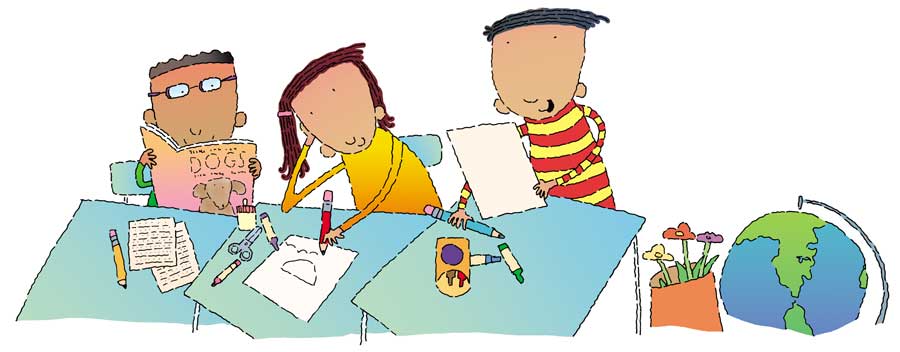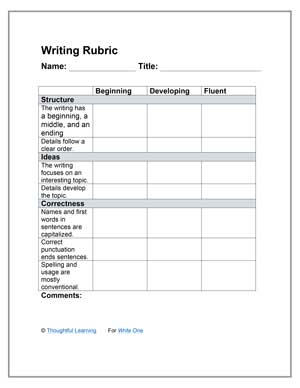You should assess writing both formatively (while students are developing their writing) and summatively (after students complete an assignment). Formative assessment does not result in a grade; summative assessment usually does.
Formative Assessment
Formative assessment happens with prewriting activities, writing in progress, journal entries, and so on. You can assess formatively during individual and small-group conferences, and you can teach students to assess formatively during peer conferences.
Individual Conferences
You can hold an individual conference informally at a student’s desk or schedule a time at your desk.
- In the early stages of the writing process, focus your responses on ideas and structure. Ask open-ended questions and give the child “space” to talk. Let the student discuss what he or she is thinking and planning. You don’t have to solve all writing problems for your students, but you can ask questions that help students work through their own ideas and process.
- During later stages, you can help students understand the "why" behind conventions: “Why do you need a period here?” Students should try to answer the question and make corrections. Avoid overwhelming beginning writers. Instead, choose your battles by focusing on the skills you have covered in the "Proofreader's Guide" and SkillsBook.
- Later in the year, you can allow students to direct individual conferences. Let them know that at any time, they can come to you to ask a writing question or work through a writing problem or simply to share a revision they have made.
Keep observational notes for each student as you conduct desk-side or more formal conferences. That way, you can track progress for each student through the course of the year.
“Teachers need to look at each individual writer, and what’s more, each writer will demonstrate different writing behaviors with different writing tasks.”
— Jo-Ann Parry and David Hornsby
Write On: A Conference Approach to Writing
Small-Group Conferences
When you have three to five students at the same stage of a writing project, call them together for a small-group conference. This meeting helps students improve their own writing while also giving input to others. Have a volunteer share work, and focus on something the person is doing well. Then make the student the teacher, asking the person to give tips to other writers. Afterward, ask if anyone has other suggestions to help the writer improve a document. Then have another volunteer share writing and receive feedback.
Later in the year, you can hold small-group conferences to help students select writing for their portfolios. Invite students to share works, telling what they like about each, and have other students weigh in on the writing they like most and why. Of course, you can also gently provide feedback about the pieces you feel work well.

Peer Conferencing
You can also teach students how to conference with others. Begin by modeling the conferencing process with a student volunteer while the rest of the class observes. Have the student volunteer read a piece of writing aloud while you listen. Then fill out a "Peer Conference" sheet and read it aloud to the student. Discuss your response with the student. Then share a piece of your own writing aloud while the student listens. Give time for him or her to fill out a "Peer Conference" sheet and read it aloud to you. Discuss the student's response. Then open the discussion to the rest of the class. Emphasize that peers need to be helpful and specific with suggestions, and writers need to be open-minded in accepting responses, though they get to decide what changes they will make.

Summative Assessment
When students complete a major assignment, you can perform a summative assessment. The following general principles will help you evaluate finished written products:
- Prepare students for summative assessment by teaching them about the qualities of writing and having them use the "Student Checklist" as they develop their work.
- Prior to summative assessment, share with students the "Writing Rubric" that you will use.
- Use the "Writing Rubric" to assess a single composition or an entire portfolio. Then discuss the rubric with the student.